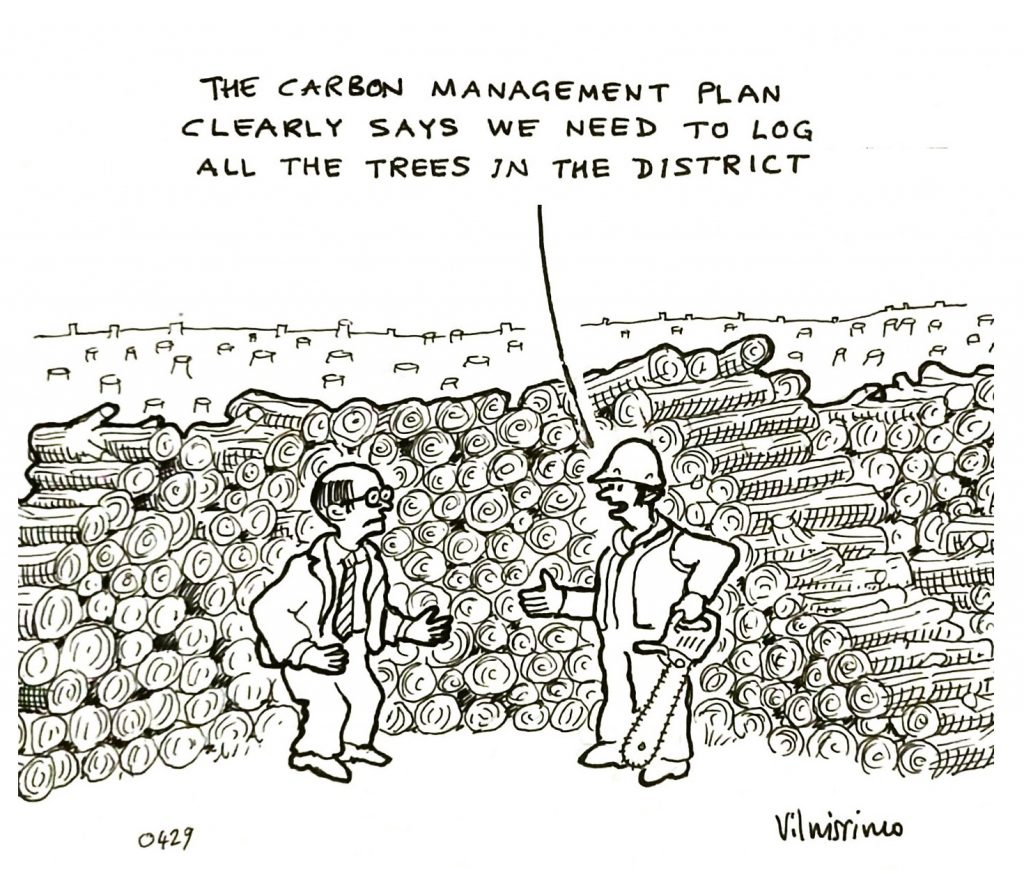We all know that trees are good and absorb carbon dioxide. But how good are they? Let’s work it out…
Trees absorb carbon dioxide at different rates depending upon their age, species and other factors but as a rough order of magnitude you can say the figure for a typical established tree is 10 kg per year. The carbon dioxide emissions associated with energy use are 0.2 kg per kWh for natural gas and (in the UK in 2018, including transmission losses) an average of 0.3 kg per kWh for electricity.
So 50.0 kWh of gas or about 33.3 kWh of electricity each generate the 10 kg of CO2 that a single tree can absorb in a year. Take that figure for electricity. As a year is 8760 hours, 33.3 kWh equates to a continuous load of only 3.8W. So one entire tree compensates for one broadband router, a TV on standby, or a couple of electric toothbrushes or cordless phones (roughly).
And as for gas consumption: remember pilot lights? The little flame that burns continuously to ignite the main gas burner? If you had pilot flame with a rating of 100 watts, in the course of a year it would use 876 kWh and require no fewer than 17 trees to offset its CO2 emissions..
Are the assumptions correct?
The first time I published this piece in the Energy Management Register bulletin my estimate of CO2 takeup rates was challenged. Fair enough: I plucked it from stuff I had found on the Web knowing that it might be out by an order of magnitude. So let’s do a sense check.
The chemical composition of wood is 50% carbon (on a dry-matter basis) and all that carbon came from CO2 in the air. So 1 kg of dry woody matter contains 0.5 kg of carbon, which in turn was derived from 0.5 x 44/12 = 1.833 kg CO2 . Thus if we know the growth rate of a tree in dry mass per year, we can multiply that by 1.833 to estimate its CO2 takeup. Fortunately a 2014 article in ‘Nature’ has the growth figures we need. Although there is wide variability in the results, for European species with trunk diameters of 10 cm the typical growth in above-ground dry mass is 1.6 kg per year, equating to a CO2 takeup of only 2.9 kg per year (although this rises to 18 and 58 kg per year for diameters of 40 and 100 cm). So newly-planted trees (which is what we are talking about) are going to fall well short of my 10 kg/year estimate, and it will be years before they reach a size where their offsetting contribution reaches even modest levels.
I like trees – don’t get me wrong – by all means plant them for shade, wildlife habitat, fruit or aesthetic appearance. But when it comes to saving the planet I just think that given the choice between (a) planting a tree and waiting a few years, and (b) cutting my electricity demand by 3.8 watts now, I know what I would go for.